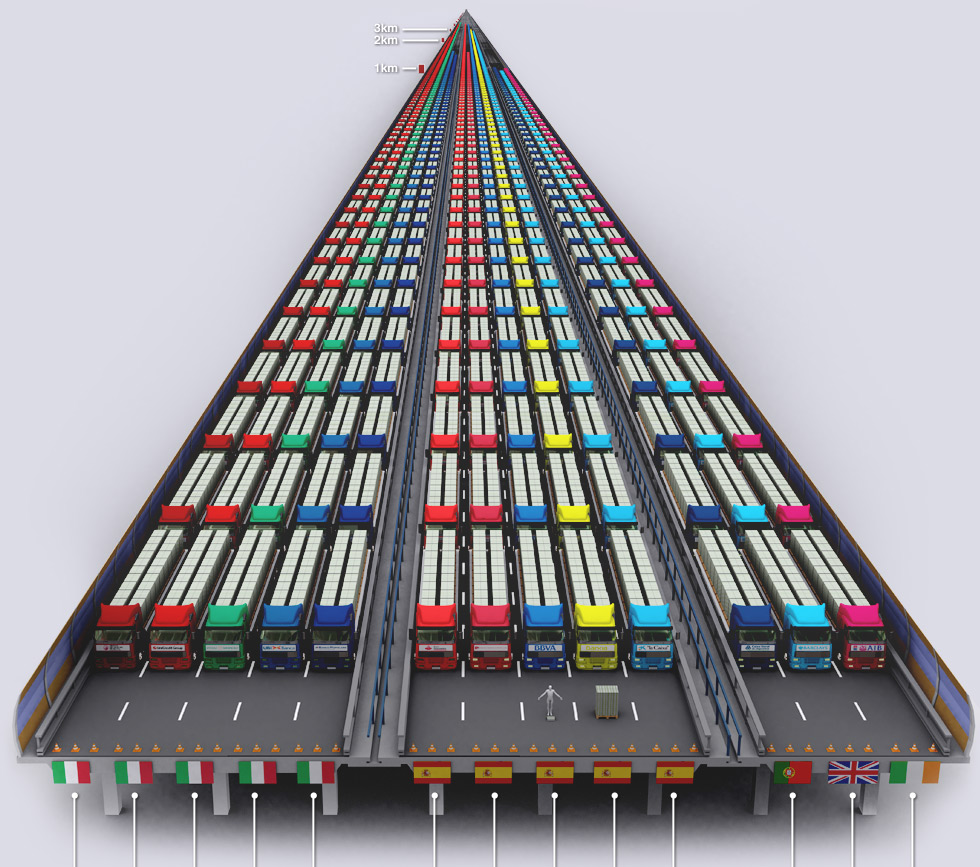Last year I posted a quick byte on Ray Dalio of Bridgewater, 2012 - We Were Warned
-Dalio is a “macro” investor, which means that he bets mainly on economic trends, such as changes in exchange rates, inflation, and G.D.P. growth.
-In search of profitable opportunities, Bridgewater buys and sells more than a hundred different financial instruments around the world—from Japanese bonds to copper futures traded in London to Brazilian currency contracts—which explains why it keeps a close eye on Greece.
-In 2007, Dalio predicted that the housing-and-lending boom would end badly.
-Later that year, he warned the Bush Administration that many of the world’s largest banks were on the verge of insolvency.
-In 2008, a disastrous year for many of Bridgewater’s rivals, the firm’s flagship Pure Alpha fund rose in value by nine and a half per cent after accounting for fees.
-Last year, the Pure Alpha fund rose forty-five per cent (!!!), the highest return of any big hedge fund. This year, it is again doing very well.
We'll, Mr Dalio is now officially the world's No1 Fund Manager. Dalio Earned Clients $13.8 Billion Last Year
Ray Dalio’s Pure Alpha hedge fund made $13.8 billion for its investors last year, while John Paulson lost clients almost $10 billion after an unsuccessful wager that the U.S. economy would recover, according to a report by LCH Investments NV.
Pure Alpha, part of Dalio’s Bridgewater Associates LP, has earned $35.8 billion for investors since its inception in 1975, said LCH, a firm overseen by the Edmond de Rothschild Group. Losses for New York-based Paulson & Co. last year cut gains the firm has made for clients since its 1994 founding to $22.6 billion, LCH estimated.
Dalio’s Pure Alpha II ran up a 23.5 percent gain in the first 10 months of the year. The manager, 62, had three of the industry’s 12 best-performing funds, Bloomberg Markets reported in its February issue. The firm charges 2 percent of assets as a management fee and gets 20 percent of profits.
Bridgewater, based in Westport, Connecticut, has about $120 billion of assets and uses a macro strategy to try to profit from economic trends. It placed diversified bets in 2011 after predicting a flight by other investors to safer assets such as U.S. Treasuries and German bonds, standing out in a year when hedge funds lost 5.2 percent on average, according to data compiled by Bloomberg. Paulson posted a record loss of 51 percent in one of his biggest funds.
“Macro investing is notoriously difficult, but the best managers are able to find opportunities, especially in troubled markets,” London-based Rick Sopher, LCH’s chairman, said in the report. Funds lost a net $123 billion, LCH estimated.
From my earlier link from my post last year:
Dalio believes that some heavily indebted countries, including the United States, will eventually opt for printing money as a way to deal with their debts, which will lead to a collapse in their currency and in their bond markets. “There hasn’t been a case in history where they haven’t eventually printed money and devalued their currency,” he said. Other developed countries, particularly those tied to the euro and thus to the European Central Bank, don’t have the option of printing money and are destined to undergo “classic depressions,” Dalio said. The recent deal to avoid an immediate debt default by Greece didn’t alter his pessimistic view. “People concentrate on the particular thing of the moment, and they forget the larger underlying forces,” he said. “That’s what got us into the debt crisis. It’s just today, today.”
Dalio’s assessment sounded alarmingly plausible. But when one plays the global financial markets a thorough economic analysis is only the first stage of the game. At least as important is getting the timing right. I asked Dalio when all this would start to come together. “I think late 2012 or early 2013 is going to be another very difficult period,” he said.
I'm definitely putting Ray Dalio alongside Hugh Hendry, Kyle Bass and Peter Schiff on my 'financial gurus to watch/monitor' list.




















